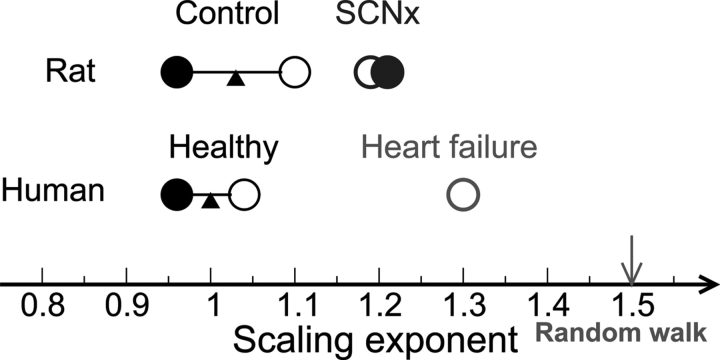Figure 3.
Illustration of influences of the suprachiasmatic nucleus on scale-invariant correlations of heart rate dynamics. The scale-invariant correlations in healthy humans and control rats, as characterized by a scaling exponent α, are similar and exhibit endogenous circadian rhythms, with larger α at circadian phases corresponding to the biological day (open circles) and smaller α at circadian phases corresponding to the biological night (solid circles). Following suprachiasmatic nucleus lesion, the circadian rhythm in the scale-invariant correlations in rats was abolished, as indicated by the similar α values at all circadian phases. In addition, suprachiasmatic nucleus lesion causes a significant increase in α value, indicating that the correlations change towards the direction of a random walk—an integration of white noise that is associated with a simple process without any underlying feedback control and characterized by α = 1.5 (arrow). The scale-invariant cardiac correlations in cardiac diseases such as congestive heart failure are characterized by higher values of the scaling exponent α ≈ 1.3 during daytime.7

